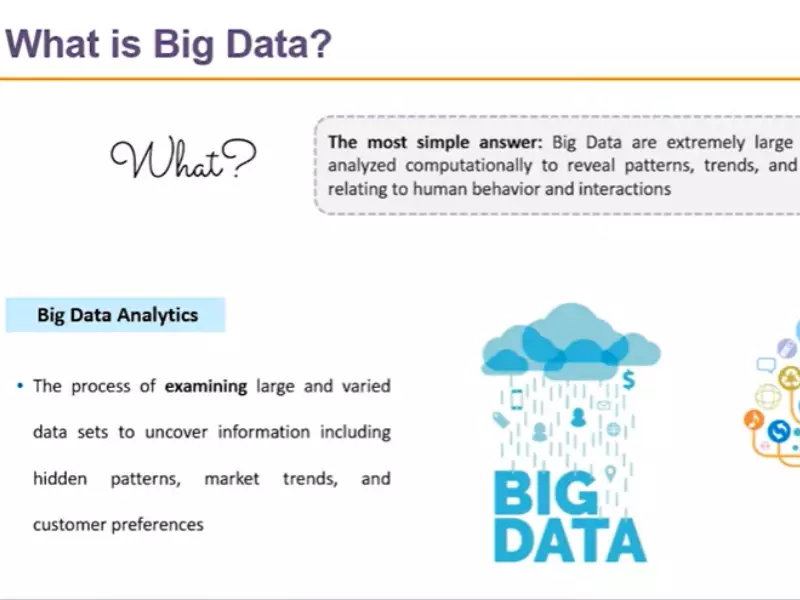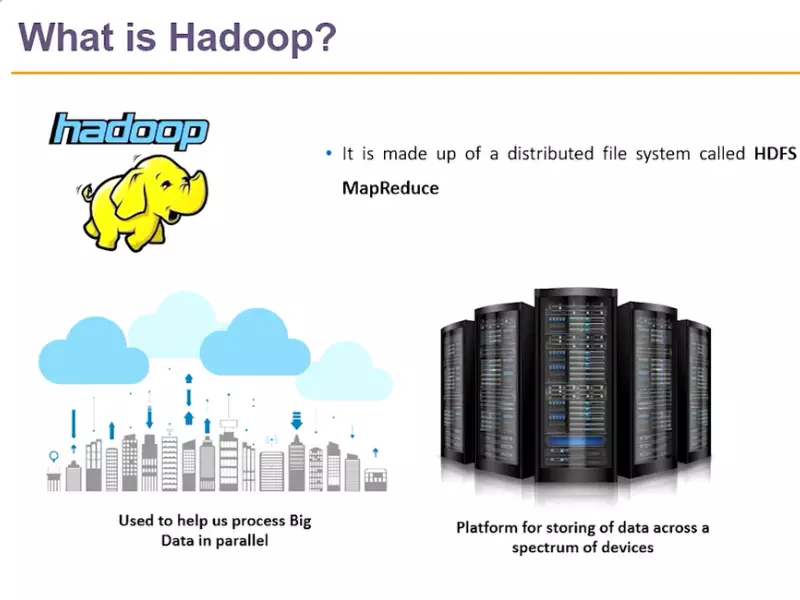Big data and Hadoop are two terms that are often used interchangeably in the world of data and analytics. However, there are significant differences between the two. In this article, we will explore the distinctions between big data and Hadoop, and understand how they work together to handle and analyze large volumes of data.
What is the Difference Between Big Data and Hadoop?
Big data refers to the massive amounts of structured, unstructured, and semi-structured data that organizations generate on a daily basis. It encompasses data from a variety of sources such as social media, sensors, transactions, and more. Big data is characterized by its volume, velocity, variety, and veracity, also known as the 4Vs.

Hadoop, on the other hand, is a framework that allows for the distributed processing of large datasets across clusters of computers using simple programming models. It is open-source and designed to store and process data in a scalable and fault-tolerant manner. Hadoop consists of two main components: the Hadoop Distributed File System (HDFS) for storing data, and the MapReduce programming model for processing and analyzing data in parallel.
While big data is the concept and the problem statement, Hadoop is one of the solutions that can be used to tackle the challenges posed by big data.
Understanding Big Data
To delve deeper into the differences between big data and Hadoop, let’s start by understanding big data in more detail. As mentioned earlier, big data is characterized by the 4Vs: volume, velocity, variety, and veracity.
- Volume: Big data refers to the sheer volume of data that is being generated on a daily basis. Traditional databases often struggle to handle the massive scale of data that organizations now have to deal with. Big data technologies, such as Hadoop, are designed to handle these large volumes of data in a scalable manner.
- Velocity: Big data is generated at an unprecedented velocity. With the rise of the internet, social media, and IoT devices, data is being generated and transmitted in real-time. Organizations need to process this data quickly to gain insights and make informed decisions. Hadoop’s distributed processing capabilities allow for faster data processing and analysis.
- Variety: Big data is not just about structured data stored in traditional databases. It also encompasses unstructured and semi-structured data such as emails, images, videos, social media posts, sensor data, log files, and more. These different types of data require specialized tools and techniques to extract meaningful insights. Hadoop’s flexible data processing capabilities make it suitable for handling diverse data types.
- Veracity: Veracity refers to the quality and trustworthiness of the data. Big data often includes data from various sources, some of which may be noisy or incomplete. It is essential to analyze and verify the accuracy of the data before drawing conclusions. Hadoop’s fault-tolerant architecture ensures that data can be processed reliably even in the presence of errors.
Understanding Hadoop
Now that we have a better understanding of big data, let’s explore Hadoop in more detail. Hadoop is a popular open-source framework that enables the storage and processing of large datasets across clusters of computers. It is designed to be scalable, fault-tolerant, and cost-effective.

There are a few key components that make up the Hadoop ecosystem:
1. Hadoop Distributed File System (HDFS): HDFS is a distributed file system that stores data across multiple machines. It splits large files into smaller blocks and distributes them across the cluster for redundancy and reliability.
2. MapReduce: MapReduce is a programming model that allows for the distributed processing of data across a Hadoop cluster. It consists of two main phases: the Map phase and the Reduce phase. The Map phase processes input data and produces intermediate key-value pairs, while the Reduce phase combines the intermediate results to produce the final output.
3. YARN (Yet Another Resource Negotiator): YARN is a resource management framework in Hadoop that allows multiple data processing engines to run on a shared cluster. It effectively decouples the resource management and job scheduling functions from the MapReduce framework, making Hadoop more versatile.
4. Hadoop ecosystem tools: In addition to HDFS and MapReduce, the Hadoop ecosystem consists of various tools and frameworks that enhance its capabilities. Some of these tools include Apache Hive for data warehousing, Apache Pig for data processing, Apache Sqoop for data integration, Apache Flume for data ingestion, and Apache Spark for fast, in-memory data processing.
How Big Data and Hadoop Work Together
Big data and Hadoop are often used together to handle and analyze large volumes of data. Hadoop provides the infrastructure and tools necessary to store, process, and analyze big data at scale. Here’s how big data and Hadoop work together:
1. Data ingestion: Big data encompasses a wide variety of data sources, from structured data in databases to unstructured data in text files or social media posts. Hadoop provides tools like Apache Flume, which helps ingest and collect data from various sources into the Hadoop ecosystem.
2. Data storage: Once the data is ingested, it needs to be stored in a way that allows for easy access and processing. Hadoop’s distributed file system, HDFS, is designed to handle the storage of large datasets across multiple machines. It provides fault tolerance and high availability, ensuring that data is durable even in the event of hardware failures.
3. Data processing: Processing large volumes of data in parallel requires a distributed computing framework like Hadoop’s MapReduce. MapReduce allows for the parallel processing of data across a cluster, enabling faster analysis and insights. Organizations can write MapReduce jobs to process and analyze big data stored in Hadoop.
4. Data analysis: Once the data is processed, organizations can use tools like Apache Hive or Apache Pig to perform data analysis and extract meaningful insights. These tools provide higher-level abstractions that make it easier for data analysts and data scientists to query and analyze data stored in Hadoop.
By leveraging Hadoop’s distributed processing capabilities, organizations can gain insights from big data and make data-driven decisions. The combination of big data and Hadoop addresses the challenges posed by the volume, velocity, variety, and veracity of data.
Frequently Asked Questions
1: Is Hadoop the only solution for handling big data?
No, Hadoop is not the only solution for handling big data. There are various other technologies and frameworks available in the market that can handle big data, such as Apache Spark, Apache Cassandra, and Apache Kafka. These technologies offer different features and capabilities, and the choice of technology depends on the specific requirements of the use case.
2: What are the limitations of Hadoop?
While Hadoop is a powerful framework for processing big data, it does have some limitations. One limitation is the high latency between data ingestion and analysis, as the data needs to be stored and processed in batches. Another limitation is the complexity of the programming model, as writing MapReduce jobs requires advanced programming skills. Additionally, Hadoop’s reliance on disk-based storage can result in slower performance compared to in-memory processing technologies like Apache Spark.
3: Can Hadoop handle real-time data processing?
Hadoop was initially designed for batch processing rather than real-time data processing. However, with the advent of technologies like Apache Storm and Apache Flink, Hadoop can now handle real-time data streaming and processing. These technologies provide low-latency, fault-tolerant processing of streaming data and can be integrated with the Hadoop ecosystem to enable real-time analytics.
Final Thoughts
In conclusion, big data and Hadoop are related but distinct concepts in the world of data and analytics. Big data refers to the vast amounts of data generated by organizations, while Hadoop is a framework that provides the infrastructure and tools to store, process, and analyze big data in a scalable and fault-tolerant manner.
Hadoop’s distributed processing capabilities make it well-suited for handling the challenges posed by big data, such as volume, velocity, variety, and veracity. However, it is important to note that Hadoop is not the only solution for handling big data. There are other technologies available that offer different features and capabilities.
Understanding the differences between big data and Hadoop is crucial for organizations looking to harness the power of data and make informed decisions. By leveraging the strengths of both concepts, organizations can unlock valuable insights from big data and gain a competitive edge in today’s data-driven world.
